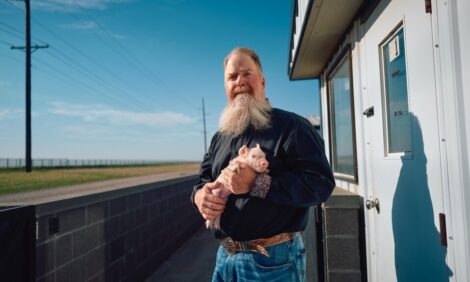



Dual-elimination programs can tackle PRRS and Mhp
Learn more about implementing Zoetis' PRRS and Mhp elimination programsHow does a disease elimination program differ from a disease control program or an intervention?
The best way to understand these approaches is to look at the intensity of the management program or the time frame to get to success.
If we talk about a disease intervention or just simply a treatment, those programs are aimed at managing an acute disease outbreak — basically just stomping out the fire today.
If we go a step further to a disease control program, we get better control of the disease issues; however, more management is often required. Long term, we likely won’t eliminate the disease with a control program, but we will certainly improve animal welfare and reduce the economic impacts of the disease for a current group of pigs and potentially for future groups of pigs coming through that flow or that system.
The third approach is a disease elimination program, which is the most intensive program from a time standpoint — from months to up to a year — before we see the fruits of the program’s success.
A disease elimination program eliminates the disease or pathogen from the swine herd. If we eliminate it, for example, from a breeding herd, we can produce pig flows out of that sow herd that no longer have to face the threat of that specific disease pathogen in the future.
Producers have a couple of options for how they can approach this, depending on farm-specific factors.
What are the characteristics of disease elimination programs?
Regardless of the specific pathogen, most disease elimination programs will use some sort of antibacterial agent, particularly if it is a bacterial agent you are trying to eliminate. Most elimination programs use a vaccine, regardless of if the pathogen is a virus or bacteria, because the goal is to optimize herd immunity to help with the elimination program.
Often, elimination programs work by altering the flow of pigs through a herd or system to prevent healthy or naive animals from being exposed to disease during the elimination process.
Finally, time is very important. The process can take weeks or months for the pigs to develop immunity and stabilize their disease status. If all animals are at a uniform disease state, it is easier to manage a disease than if a herd has animals at various disease states.
Elimination programs have unique characteristics, depending not just on the specific disease agent but also on farm factors. A good elimination program needs to consider the characteristics of farm biosecurity and any operational or financial constraints that might be unique to that specific farm or a farm system.
In terms of swine respiratory disease, prevalence and impact on performance and economics, how do the Mhp and PRRS programs compare?
Porcine reproductive and respiratory syndrome (PRRS) is a viral infection of pigs, while Mycoplasma hyopneumoniae (Mhp) pneumonia is a bacterial infection. These two agents rank first and second on the list of most financially impactful swine respiratory diseases. Derald Holtkamp, professor of veterinary diagnostic and production animal medicine, Iowa State University, released a 2024 study that found PRRS infections cost the U.S. pork industry an estimated $1.2 billion per year, which is an 80% increase from a decade earlier. The study also found a disproportionate amount of the production loss increase came in herds of growing pigs, as opposed to breeding herds, while producers manage additional veterinary care costs and the biosecurity management issues.1
Although Mhp does not have the high mortality rate often associated with PRRS virus, it will cause decreased average daily gain, reduced feed efficiency, increased days to market and added medication costs. These factors will add $2 to $5 per pig in extra costs for raising a Mhp-infected pig, as opposed to a Mhp-negative pig.2
Are there advantages to implementing PRRS and Mhp elimination programs at the same time?
Having a dual-elimination program has both practical and financial advantages. Disease elimination programs will require management steps that are not routine production practices and, in some cases, will interfere with normal production practices. Rolling two elimination programs together can potentially shorten the time frame and lessen the impact the elimination programs have on normal day-to-day operations.
When combining two or more disease elimination programs, it’s important that the programs are compatible. If they don’t work well together, negative impacts on the sow farm could increase. The goal is to try to shorten the overall impact on herds.
In the past, PRRS elimination was successful with a six-month herd closure, which allowed the virus to stabilize and the sow’s immune system to work. Now, unfortunately, more-recent PRRS virus strains identified by diagnostic laboratories are more severe, linger longer in a herd and are harder to eliminate. What used to be a six-month PRRS elimination process has become closer to a 10- or 12-month program.
An Mhp elimination program is a standard eight-month closure. A silver lining to the longer PRRS elimination process is that an eight-month Mhp closure period can now fit inside of the 10- to 12-month PRRS elimination program timing, allowing a producer to run them in parallel.
How does a producer get started on implementing this type of disease elimination program?
The first thing is to confirm the presence and establish disease status of both PRRS and Mhp in a herd. We want to make sure we understand the prevalence and severity of PRRS and Mhp in a herd. The STOMP Plus® Diagnostic Program is a consultative diagnostic program by Zoetis to help producers identify their herd health status.
Once we’ve identified that these two agents are on the farm, the next step is to design a timeline with our Mhp Guardian program, in which we customize a timeline for each specific farm or production system. Then we develop a similar timeline for PRRS elimination.
Finally, it’s important to consider the unique characteristics of each farm. A Zoetis Technical Services Veterinarian will work with a herd veterinarian or the health production team to understand factors like the farm’s location, biosecurity capabilities, access to naive gilts for after the elimination program is over, and operational capabilities.
All these unique qualities need to be considered, so we can implement a successful program.







